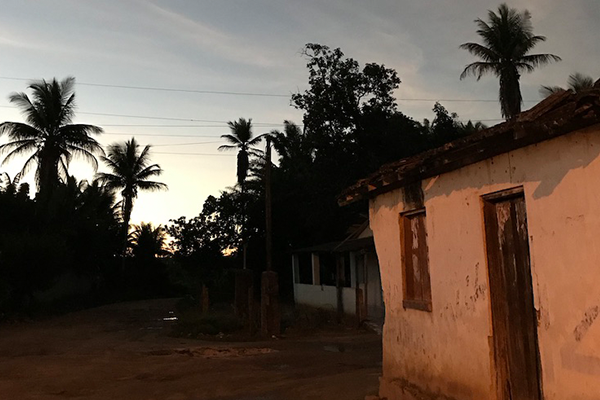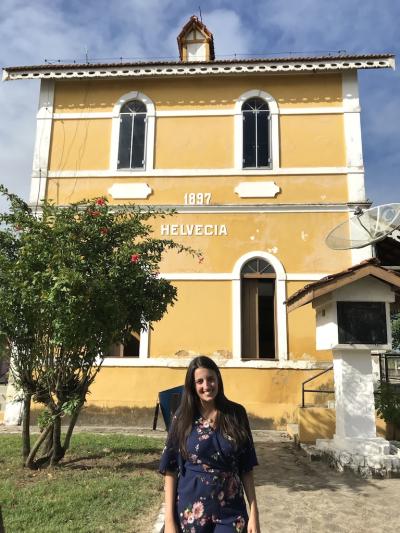The Helvécia Community of Brazil

By Graduate Student Luana Lamberti Nunes, Department of Spanish and Portuguese

My research took place in Helvécia (Bahia) for about a month. The community of Helvécia is an officially-recognized maroon society ('quilombola') in Brazil. During my time living there, I interviewed several people, mostly the community’s elders. I also visited two historical sites, an old 'senzala' (the place where slaves used to live and work) and an abandoned cemetery where a wall is still visible that used to separate the slaves’ sepultures from the slave owners’ ones.
My research participants told me stories about the era of slavery since most of their ancestors were Africans who were slaves in the surrounding coffee plantations. I was particularly interested in their language and its relation to the socio-historical context of Helvécia. Related to the language aspect, I found what I believe to be the remnants of a creole language that was spoken by the slaves. A group of three sisters could remember some words, sentences and also songs that are in the creole. They also keep alive a performance called 'bate-barriga' in which women dance, followed by drums and songs in 'Nagô' (the way they refer to the creole language). I was able to record audio and video of most of these practices. The elders’ narratives about their grandparents also confirm the creole’ hypothesis since all of them reported to have heard a different language being spoken by their grandparents that could not be understood by the young people.
The current socio-political situation of Helvécia is also interesting and informative about their history of constant endurance. Jane Krull, who is one of the community’s political leaders, is an important figure in the community. She helps young people to get access to education in offering her computer (one of the few available in the community) so they can apply to the university. She also represents the community in several political meetings and fights for their land’s protection. Most of the political achievements in the community (such as their official recognition as a maroon society in the early 2000s) were conducted by women. They hold a respected and important place in Helvécia, which seems to be pretty much the rule of the community since the old times, according to my informants’ narratives.
I consider my experience as a researcher in Helvécia to have been extremely rich. I learned about a community that keeps fighting to exist in spite of all the current and historical difficulties they have faced. I would like to thank the Migration, Mobility, and Immobility Project Graduate Grant Committee for giving me the opportunity to enrich my knowledge about one of the few still remaining maroon societies in Brazil. I intend to contribute with my research to our knowledge about the consequences of forced migration in slave societies.
